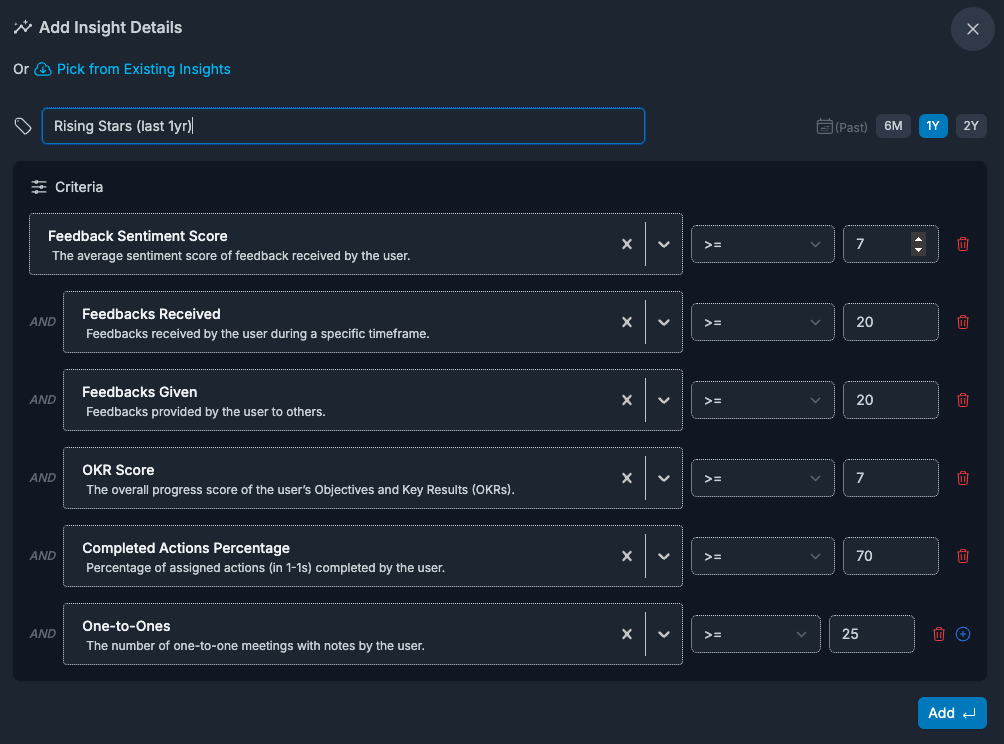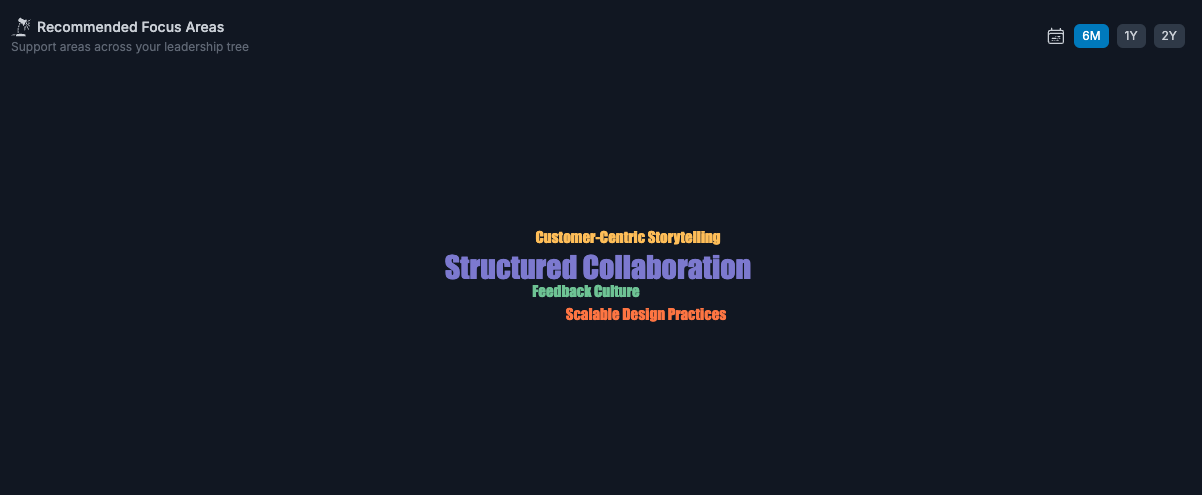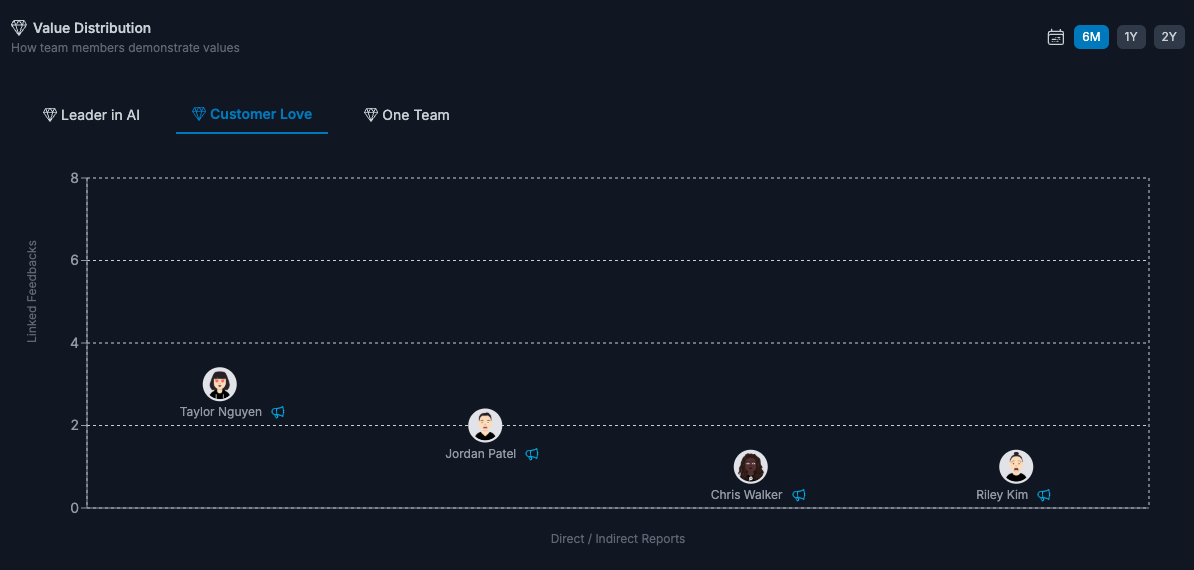Insights overview
ClarityLoop provides leaders with insights to help them act early—preventing potential challenges and highlighting opportunities when they matter most. These insights are generated from real-time data across the organization and presented through customizable reports, focus areas, and value-based trends.
Key components of actionable insights
1. Configurable reports

Leaders can access reports tailored to track important performance and development trends within their reporting tree. These reports use multiple data points to surface insights like attrition risks, rising stars, and potential leaders (but not limited to just these).
Default reports available:
- Attrition risks: Identifies individuals who may be disengaging based on activity patterns.
- Rising stars: Highlights individuals showing consistent growth and strong feedback patterns.
- Potential leaders: Flags team members who exhibit leadership behaviors.
Available data points for reports:
- Feedback activity: Feedback received, given, and feedback containing growth opportunities.
- Feedback sentiment: Sentiment scores derived from patterns and language in feedback.
- OKR performance: OKR scores and completion rates.
- 1:1 engagement: Frequency and outcomes of 1:1 meetings.
- Career development: Current levels, promotions, and completed growth actions.
- Action completion: Percentage of actions completed from meetings and feedback.
Filtering reports:
Reports can be filtered using these data points with parameters like greater than (>), less than (<), or within a date range of 6 months, 1 year, or 2 years.
Example:
To identify rising stars, a leader might set a filter for:
- Feedback with growth opportunities > 5 in the last 6 months
- Feedback sentiment score > 7
- Completed actions > 80%
2. Focus areas

Focus areas provide high-level recommendations about where leaders should prioritize their time and resources. These suggestions are generated by analyzing growth opportunities surfaced across the entire reporting tree.
How focus areas are determined:
- AI reviews patterns across feedback and development data.
- Common growth themes across teams are grouped into suggested focus areas.
- Managers can use these areas to guide team-wide development initiatives.
Example:
A focus area might highlight a need for stronger cross-team communication if multiple individuals have received feedback related to communication clarity.
3. Company values in action

Leaders can view how individuals and teams demonstrate core company values based on feedback received.
Key view:
- A graph displays individuals' contributions toward each core value.
- The system calculates contributions based on the number of feedback entries explicitly linked to company values.
- The graph can be filtered to focus on specific values or time frames.
Actions leaders can take:
- Recognize value champions by sending shoutouts or announcements directly from the insights view.
- Identify areas where certain values are less visible and follow up accordingly.
Example:
If the value "Collaboration" appears less frequently, leaders might consider initiatives to reinforce its importance.
Accessing insights
- Open Org > Actionable Insights from the sidebar.
- Apply filters if needed and explore insights.
Tips for using insights effectively
- Review reports regularly: Trends often emerge gradually, so check insights consistently.
- Act on focus areas: Use suggested focus areas as agenda items in 1:1s and team meetings.
- Celebrate value demonstration: Send shoutouts to employees who consistently reflect company values.
FAQs
Who can access these insights?
Only leaders with appropriate permissions can view insights for individuals in their reporting tree.
How often is the data updated?
Data updates automatically when new feedback, OKRs, or 1:1 outcomes are recorded.
Can I customize reports?
Yes. You can adjust filters and timeframes to track specific data points relevant to your needs.
Next steps: